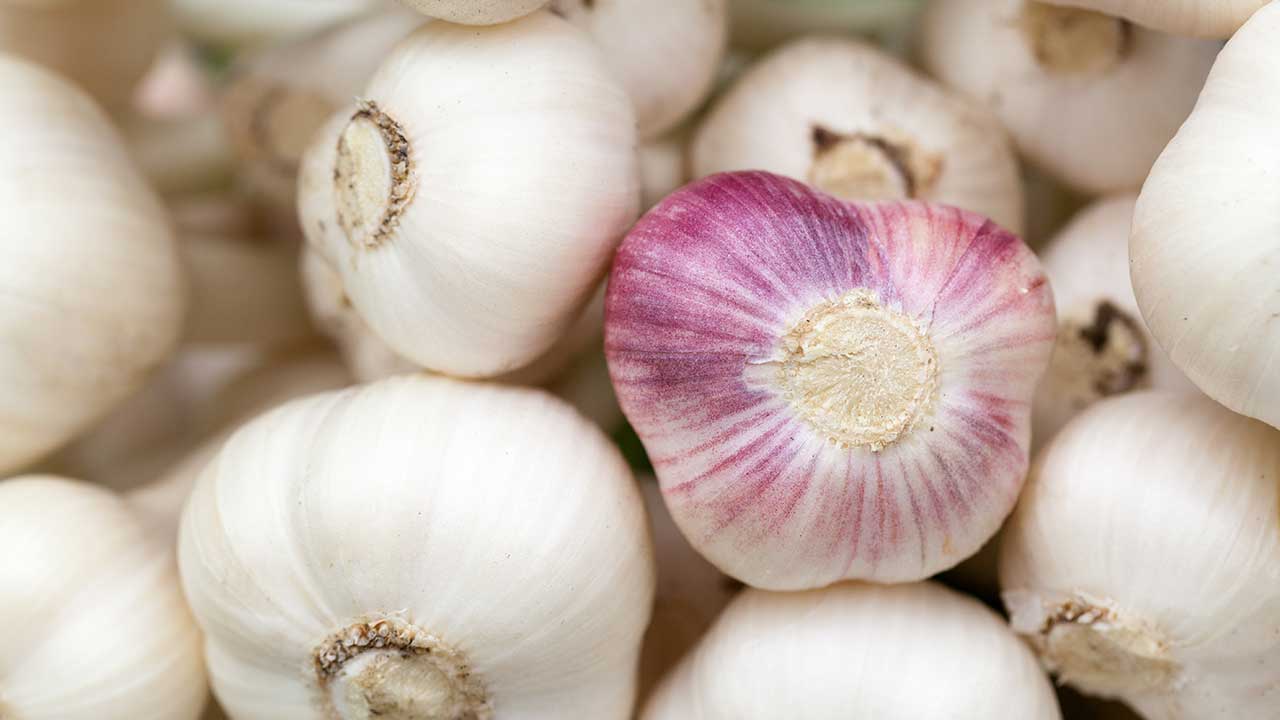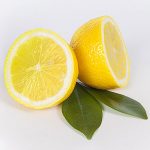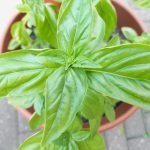9 Tips to have often needed recipe ingredients ready for quick use

By Linda Cornelius
ecogal Author and Designer
I don’t know about you, but I love to have grated lemon peel in my cakes, and so on. But I hate having to grate it every time I need it, especially if I’m in a bit of hurry, so… here we go, I’m sharing a few of my time-saving tips for having what you need at hand in a nanosecond.
-
Bread crumbs
 Bread crumbs are so great when you are just putting some dish to re-heat in the oven, it makes a nice little brown crust and is so tasty.
Bread crumbs are so great when you are just putting some dish to re-heat in the oven, it makes a nice little brown crust and is so tasty.I bake my own bread, and because of mold I store it in the fridge, which makes it go stale quicker. The last slices are really not enthusing unless you toast it.
But since my home made bread is so organic, whole and nutritious, I hate to throw it away. Any bought type will do just as fine, especially if you have spent time and money to acquire really good and healthy bread.
As tradition has it, one should never throw bread away and indeed, there are so many ways to use it to enrich dishes that it is really worth prepping and re-using the crumbs and pieces of stale bread …
So I grate the bread with my food processor and freeze it down in a little container. Since I love recycling, I have all sorts of sizes and kinds of old food containers. Voilà, now I have freshly grated and nutritious, not to mention delicious bread crumbs for my ‘day after’ oven dinners.
It’s so simple to add some parmesan cheese on top of any pasta, rice or veggie dish, sprinkle a layer of the bread crumbs with a little bit of olive oil or butter, and just heat it up in the oven. This shines new life into any leftover. It’s actually so good that I even plan this head: I cook an extra portion when I’m at it, so I can freeze it down for later use and reheating.
-
Grated lemons, oranges
 I used to be able to find organic lemon and orange powder for my cakes. But somehow now I can’t. What to do? Easy! I take a few oranges or lemons, and cut the outer peel off. Then I put the fruits back into the fridge for further use. I like the semi-bitter taste of the white, so I don’t worry if I get some of it in the mix. I just try not to peel too deep a layer.
I used to be able to find organic lemon and orange powder for my cakes. But somehow now I can’t. What to do? Easy! I take a few oranges or lemons, and cut the outer peel off. Then I put the fruits back into the fridge for further use. I like the semi-bitter taste of the white, so I don’t worry if I get some of it in the mix. I just try not to peel too deep a layer.Next onto the food processor: I throw it all in with the grating tool, and the result is frozen down in small containers, ready to sprinkle when I want it. Just don’t pat the ‘powder’ down in the container: leave it airy during the freezing.
-
Mint leaves, herbs
 I use a lot of herbs when I cook, to make my dishes extra tasty, especially since I know each has specific health benefits. Also: I love my pure mint infusion, so I grow herbs and mint on the balcony.
I use a lot of herbs when I cook, to make my dishes extra tasty, especially since I know each has specific health benefits. Also: I love my pure mint infusion, so I grow herbs and mint on the balcony.During Spring the mint goes absolutely crazy with beautiful large leaves, but later in the season it gets too hot, and the mint suffers. So right now is the time to harvest it and store it!
Pick the branches that look most succulent and beautiful, and freeze them as-is. Once frozen it’s just a question of wiping the leaves loose from the branch, ready to store in the freezer. Now a fresh mint tea is only seconds away, no matter what the season is.
Note: frozen herbs and leaves are limp when thawing, but if you are cooking or making tea this doesn’t matter at all. The taste is just as good.
-
Garlic
 Ah, how many tips from chefs have I watched, on how to easily peel garlic? See the video below, quick and easy peeling. But why not take it a step further, and have a whole bunch ready? Said and done: peel as much garlic as you feel like and have time to. 2 to 3 bulbs will last you a while.
Ah, how many tips from chefs have I watched, on how to easily peel garlic? See the video below, quick and easy peeling. But why not take it a step further, and have a whole bunch ready? Said and done: peel as much garlic as you feel like and have time to. 2 to 3 bulbs will last you a while.Now you can choose: either put the cloves in a jar of olive (or your preferred) oil – I only use quality Cold Pressed Extra Virgin Olive Oil for just any cooking, and of course it’s organic too – and store this in a cold and dark place, for example in a closed cupboard, or use a dark jar: olive oil doesn’t like light and sun.
The second option, which I am fond of, is to use the processor to cream the garlic with olive oil. This way it’s ready to mix into home made mayonnaise, dressings, dishes. I freeze it down in portions for deferred use.
It won’t keep forever, so don’t make too much at the time unless you plan to freeze it. 2-3 weeks is just fine, longer storage is risky with this method, I’ve seen.
The olive oil gets a great garlic treatment and is perfect for dishes where you don’t want the flavor to be too strong. But you can also pick a clove from the jar and use in your dishes, until the jar is empty and in need of a fresh batch.
I love this approach, because it makes preparing a great and healthy salad dressing or garlic addition a question of seconds, and no messy hands!
-
Turmeric
 One of my latest experiments has been to grate fresh turmeric so it’s always ready to use. I love turmeric, and it has so many health benefits that it’s a must to incorporate it just about anywhere you can think of.
One of my latest experiments has been to grate fresh turmeric so it’s always ready to use. I love turmeric, and it has so many health benefits that it’s a must to incorporate it just about anywhere you can think of.I use it in any dish I make, as well as in bread (just mix the grated turmeric in the flour before kneading, and enjoy the nice warm coloring it gives too), in polenta, in cheese fondue, on fruit desserts, in teas… just get wild and experiment.
The taste is mild, so I use it generously: adding a spoonful of turmeric (or a teaspoon, depending on what I cook and the quantity I’m preparing) just about everywhere.
Now how do you grate turmeric fast and easy?
You can actually eat the peel. It’s just a habit to say: peel turmeric and ginger. But I like peels, they are often storing more precious nutrients and besides, who likes to peel stuff? I don’t. It’s boring.
So I just wash and pat dry, then chop up the turmeric in smaller pieces, then throw it in the grating food processor.
Beware! Everything, and I really mean everything, will get carrot-colored. My food processor is now hued in different shades of orange… But hey, it’s not damaging, and it doesn’t matter. Just enjoy the colorfulness. Make sure the turmeric doesn’t spread wildly around in your kitchen and onto your hands, it really colors just anything slightly porous.
 If you get it on your hands (like I do, I’m not careful and I don’t use gloves in the kitchen) just relax: it washes off in a couple of days. Not really gross at all. That is what is used to make these wonderful tattoos women have in India and other countries…Once the turmeric is grated, I put it on a small tray, in not too deep a layer, and freeze it. Now I can break it in pieces and freeze in smaller containers. Or just keep the flat slate and break pieces off as you go.
If you get it on your hands (like I do, I’m not careful and I don’t use gloves in the kitchen) just relax: it washes off in a couple of days. Not really gross at all. That is what is used to make these wonderful tattoos women have in India and other countries…Once the turmeric is grated, I put it on a small tray, in not too deep a layer, and freeze it. Now I can break it in pieces and freeze in smaller containers. Or just keep the flat slate and break pieces off as you go.My thawed turmeric portion I store in a little jar in the fridge, enough for a few days. I really love this method, it saves me so much time every day.
-
Ginger
 You can do the same above procedure on ginger: grate, freeze, thaw a little portion at the time. Use in dishes, baking, fruit desserts, teas.
You can do the same above procedure on ginger: grate, freeze, thaw a little portion at the time. Use in dishes, baking, fruit desserts, teas.
Of course you can just use the dried spice found in stores, but really I find the fresh versions more tasty. You decide. -
Vegetable scraps
 When you are prepping your veggies, you cut a lot off because it’s not so nice to eat, or too hard. Don’t throw the pieces away – only discard the really gross waste. Put the rest in a freezing bag and freeze.
When you are prepping your veggies, you cut a lot off because it’s not so nice to eat, or too hard. Don’t throw the pieces away – only discard the really gross waste. Put the rest in a freezing bag and freeze.Once you have enough, use it to make a great vegetable stock for your dishes. Boil all the scraps with abundant herbs and spicing, and depending on your liking you can make a real stock by filtering away the veggie pieces or cream it up with the processor. Now you have quick, healthy and tasting ‘liquids’ to use when cooking. And the creamy version is great for sauces too. Depending on what you gathered, it may even be just great to eat as-is!
If you are looking at loosing weight, it’s great habit to start the dinner with a little bowl of soup… Have that handy this way.
This is also a great method for quickly storing veggies you didn’t get to eat, and will wilt shortly if you don’t do anything. Keep them to make soups when you have a good batch. You can also add fresh salad leaves in your soup or stock. Let’s remember that we tend to throw away far too much, and it’s a real money waster to do so.
-
Basil
 I grow my own basil, and I have lots of kinds: from purple to Italian Genovese to lemon basil, as well as standard.
I grow my own basil, and I have lots of kinds: from purple to Italian Genovese to lemon basil, as well as standard.In Spring I plant the seeds and let nature (and a little watering) do the rest. Basil needs good sunshine. You can also use a sunny windowsill, but for best results have a few pots outside in the Sun.
Freeze the leaves flattened on a small tray or in-between some cooking paper. Once frozen you can smolder it into pieces and keep in a container in the freezer for later use. This is a great way of keeping that Summer taste for the Winter.
-
Pulp
 If you juice carrots or fruits, keep the pulp, you can just freeze it for later use. I often add it to cakes and breads, as extra fiber and taste.
If you juice carrots or fruits, keep the pulp, you can just freeze it for later use. I often add it to cakes and breads, as extra fiber and taste.
For the lazy or really time-crunched situations: find already frozen garlic, onion and herbs in the supermarket (get organic if at all possible) and keep that as an extra time-saver.
Remember: using herbs in your dishes really makes a difference, and each have precious nutrition values for our bodies.
